Cork Flooring
Green flooring is any flooring that is sustainable, eco-friendly, contains recycled content, is recyclable, leaves a small carbon footprint or has low VOC’s (Volatile Organic Compound). There are different degrees of green when referring to different types of flooring.
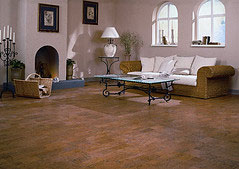
Cork
- Better than a renewable resource because it is a harvested resource (only the bark is harvested from the tree)
- A recycled product because cork floors are made from the waste cork that makes wine stoppers.
- A law in the 1930’s called “The 9 Year Law” was passed to keep cork from being harvested any sooner than every 9 years. The tree has to reach 60 cm in circumference before it can be harvested. The first harvest from a cork tree can only occur at age 25.
- The tree is not destroyed or damaged when harvesting cork.
- To complete the environmentally sound process, water-based finishes and adhesives should be used.
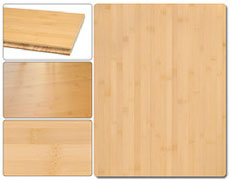
Bamboo
- Bamboo is a rapidly renewing resource that matures in three years
- It regenerates without need for replanting
- It also requires minimal fertilization or pesticides
- There currently is no FSC certified bamboo so it is important to see what you can confirm about the bamboo you are interested in before purchasing.
Carpet
- According to the Carpet and Rug Institute: The carpet industry is minimizing carpet’s impact on the environment through the new “3 Rs” which stand for reduce, reuse and recycle. When carpet reaches the end of its long life, it is reused to make new carpet or is recycled into a variety of products, ranging from roofing shingles and railroad ties to automotive parts.
- Factors that determine if carpet is “green”: carpet fibers, toxics content, dye, VOC emissions, and recycled content.
- The Green Label and Green Label Plus from the Carpet and Rug Institute ensure that customers are purchasing among the lowest emitting carpet, adhesive and cushion products on the market.
Stone
There is no clear data on the impact of using stone as a building material on the environment. When the data is collected it will contain information on water and energy consumption, yields from raw materials, recyclability and other measures that are considered in life cycle assessments, energy used in transportation, processing and selling the material.
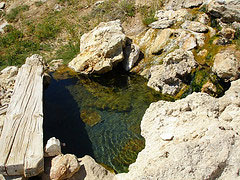
Stone does have the following features:
- It’s a natural product
- It has an enduring life cycle so it doesn’t have to be replaced
- Ease of care and maintenance
- Recyclable
- Quarry and manufacturing use best practices
- Can be reclaimed
Hardwood
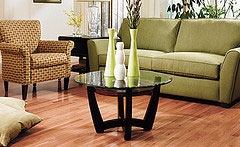
- Natural Resource
- Renewable
- Recyclable
- Suitable for a “healthy home” environment
- Forests are managed for replanting
Linoleum
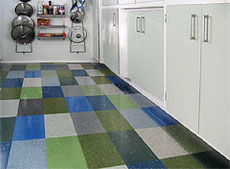
- Made from all natural materials
- The natural raw materials used to create Linoleum are available in abundance: linseed oil, rosin, wood flour, cork flour, ecologically responsible pigments and jute.
- These raw materials are harvested or extracted with relatively little energy consumption. The main energy resource for the process is the sun. The plants and trees that supply linoleum's raw materials also contribute to the production of oxygen and the subsequent reduction of carbon dioxide in the atmosphere, thus reducing the amount of greenhouse gasses present in the atmosphere.
- Can be recycled
- The energy obtained from incinerating linoleum is roughly equivalent to or even more than that which is used in production.
- Linoleum can be safely added to landfill refuse sites, where natural decomposition takes place. Linoleum is fully biodegradable and does not release harmful substances or gases such as chlorine and dioxins.
- Adhesives are 100% solvent free and meet all low VOC requirements
- Does not require maintenance from harmful chemicals
- Linoleum contains virtually no trace of toxic material and is naturally beneficial to air quality.
Ceramic Tile

- Rarely release emissions
- Some contain recycled content
- Long lasting and not replaced frequently
- Requires little maintenance
- Value is unclear due to its weight causing more fuel during transportation
Carpet Cushion
The Carpet and Rug Institute (CRI) has established the Green Label program to test for VOCs in cushion used under carpet. This program helps you choose low-emission cushion. You can identify these products by looking for the program’s green and white seal. These products are continuously monitored to ensure that they maintain compliance.
Cushion products are characterized as prime polyurethane, bonded polyurethane, mechanically frothed polyurethane, rubber-hair, rubber–jute, synthetic fiber, resonated or coated synthetic fiber, rubber and rubberized polyurethane.
Cushions are tested for total volatile organic compounds (TVOCs), butylated hydroxytoluene (BHT), formaldehyde and 4-phenyl cyclohexane (4-PCH).

Carpet cushion can be:
- Made from100% recycled bonded cushion from polyurethane foam or 100% recycled content in Rebond Carpet Cushion, a bonded polyurethane product
- Made of 97% recycled rubber for carpet underlayment
- Made with no CFC’s, latex or chemical additives
- Made with 100% recycled tire rubber carpet pad. Withstands temperatures from 40 to 120 degrees. Free of toxic materials such as PCB, mercury, and formaldehyde
- Made from ground tire scrap rubber granules bonded with latex and 92% recycled tire rubber
Installation
- Use adhesives with low VOC’s
- Choose water based finishes over solvent based
Adhesives
Adhesives are just as important to consider when purchasing flooring as the flooring itself. Adhesives with harmful toxins can damage indoor air quality by giving off harmful gasses.
Tips for Adhesives:
- Choose low VOC’s (Volatile Organic Compounds)
- Do not contain formaldehyde
- Qualify for the Carpet and Rug Institutes Indoor Air Quality green label
- Once installed, floors still give off gas compounds
- Less durable floors have to be replaced more often
- High maintenance floors use more harsh chemicals
- Consider floors that don’t have to be refinished



